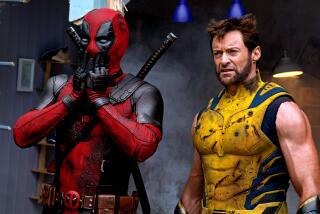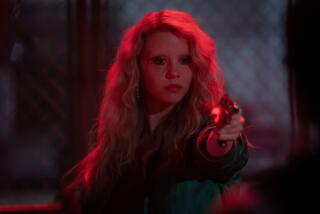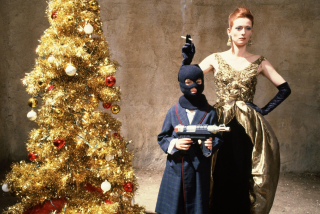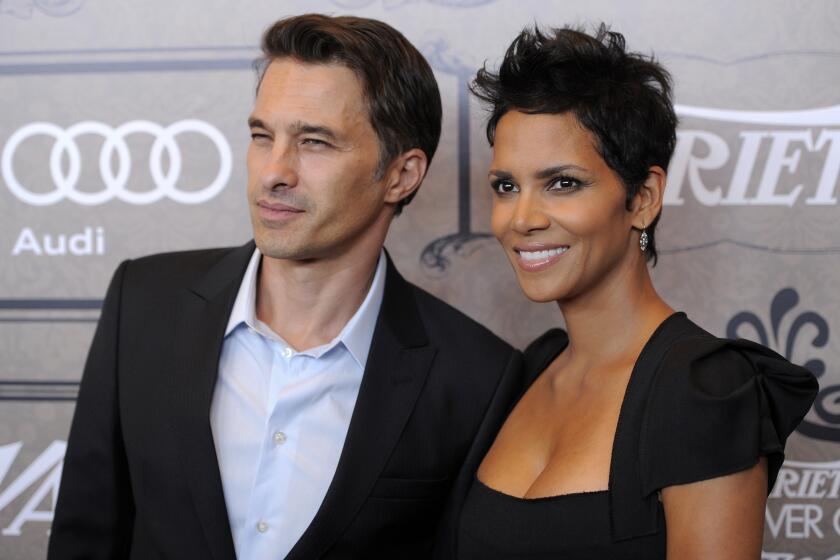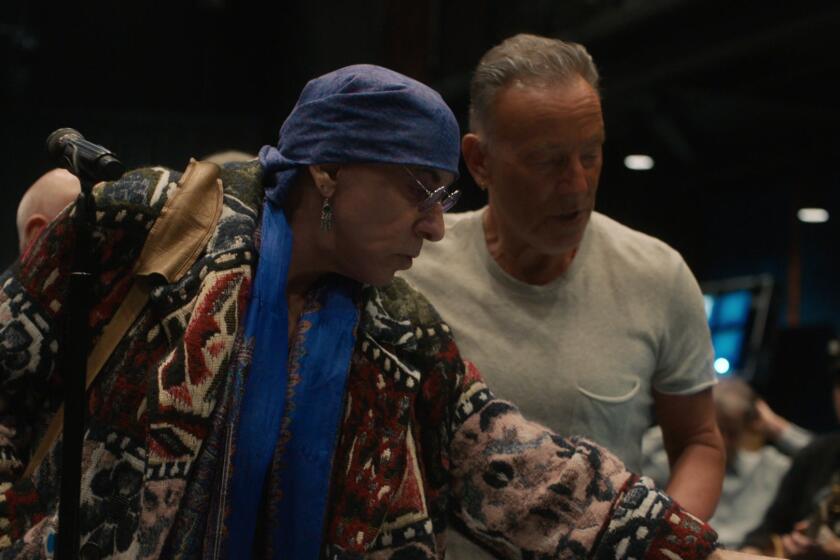‘Fifty Shades of Grey’ and the dawn of movie hate-watching
That the softcore seductions of Sam Taylor-Johnson’s “Fifty Shades of Grey” proved a box office hit this weekend was a surprise, at least when viewed through the lens of early expectations.
After Universal and its (then-prestige) subsidiary Focus Features won rights to a furious bidding war for E.L. James’ complete literary oeuvre in 2012, many questioned whether all the money, and the cocktail-party mockery, was worth it. After all, “Fifty Shades of Grey” was the kind of book that had a certain flash-in-the-pan quality. And that flash was likely to go out by the time the studio was finally able to finish and release a movie.
What’s more, the material had become a bestseller because, in novel form, it could be consumed in solitude, and under cover of Kindle. What would happen when all the book’s explicit bondage scenes were made literal on a giant movie screen, a private reading experience now turned into a communal gathering under flashing digital marquees? Would people turn out to watch Christian Grey and Anastasia Steele in flagrante delicto in the company of a few hundred strangers? Or would they just bed down with the book again?
Yet as the holiday weekend unfolded, the film climbed to the top of the box office charts. An $85-million total over the three-day weekend, an estimated $94 million for the weekend including Friday, and the biggest opening ever for either a Valentine’s or Presidents Day weekend, added up to a major blockbuster. All the moviegoers who observers thought might not like a movie about “Fifty Shades” turned out to really like it.
But there may be a niggling, conflicting data point in all this: Many of the people who turned out to see the movie didn’t really like it, at least not in the conventional sense. As my colleague Saba Hamedy reported in this amusing post, screenings were filled with titters, and then some.
“During a late Saturday afternoon showing, certain lines of dialogue meant to be serious led to explosive laughter from the audience,” she wrote. “Likewise, the abrupt ending of the film triggered both groans and applause.” In the New York Times, A.O. Scott noted similar laughter at the end and floated “derision” as one possible reason.
Audiences made their skepticism clear via CinemaScore, the coin of the realm for post-viewing feedback. They gave “Fifty Shades” a C+, an unusually poor score for a movie that storms the box office.
What at least some viewers seemed to be doing this weekend with “Fifty Shades,” in other words, was a version of hate-watching, that now-familiar term for fans who tune in to a TV series week in and week out, despite the fact that they don’t really like it, or because they don’t really like it, or because they love to not really like it.
There’s no way to know how many “Fifty Shades” ticket buyers fall into this category, but the anecdotal evidence is strong. There are movies such as “Drive” that infamously return abysmal CinemaScores because of the gap between expectation and experience. Audiences imagine in their mind’s eye “Fast & Furious”; they get Scandinavian arthouse stylings.
But it’s unlikely the hard-core fans of “Fifty Shades” came in expecting “The English Patient.” They showed up precisely because they knew what they were going to get. The C+ CinemaScore isn’t a sign of disappointment -- it’s a gleeful expression of the cheese they anticipated in the first place. “We knew it would be bad, we came to revel in the badness, and we were not disappointed.” There are different ways to dislike a movie.
Whether dislike keeps people turning out in the next few weeks is an open question. The smart money would be that it doesn’t. A devoted opening-weekend crowd might come out to hate-watch, but more casual fans are likely to be holding back until they get a sense of the word-of-mouth, and then, upon hearing it’s poor, will decide to stay home.
But the idea of a hit based at least in part on hate-watching is interesting for a different reason. Television regularly scores ratings wins with content people love to hate and, in some cases, even program with this in mind (Hello, “Sharknado”).
Film hasn’t experienced it much yet. But like so many trends that now move easily between the two mediums, the hate-watching phenomenon might be starting to migrate. “Fifty Shades” is one of the first modern examples of a big opening for a movie that people didn’t really like but came out to despite -- or, again, perhaps because of -- that fact.
Mockery has always been a part of our moviegoing experience; cinema culture would be a lot less fun without “Star Wars: The Phantom Menace” or the “Matrix” sequels. But the immediacy of social media and the ability to bond instantly with other joyful skeptics has promulgated and changed this culture. I’m not sure watching Jar-Jar Binks in action was terribly enjoyable at the time. But seeing movies of comparable (non)quality circa 2015 has offered a kind of real-time fun, or at least sport. (Incidentally, this is a different phenomenon, albeit a distantly related one, to that of the camp cult classic of “Rocky Horror Picture Show” and its ilk, in which a movie’s badness is, many years later, celebrated with a participatory exuberance.)
Film studios will have a harder time than TV jumping on the hate-watching bandwagon. Movies on the whole are more expensive to produce and there are fewer of them besides, so ceding any to the hate-watching beast may be a difficult calculation to make.
Cinema is also less conducive to hate-watching from a consumer standpoint. It’s one thing to flip the channel and have some snarky fun; it’s another to plan an outing and shell out money for it.
And of course one of the more enjoyable aspects of hate-watching is the ability to use social media to do it. Live-tweeting a TV event is now common, and live-snarking it even more popular, responsible for large chunks of traffic whenever a big event is on. That’s a problem for film, where live-tweeting is of course verboten and, in any event, would lack the same punch since most viewers aren’t partaking of the experience at the same time.
But theaters may be beginning to find ways around these challenges. When the last “Sharknado” movie premiered on Syfy, in fact, some exhibitors that had decided to simulcast the film set aside certain screening rooms where tweeting was not only allowed but encouraged. As more theaters jump into the live-events game, it’s only natural that live-tweeting and the hate-watching it serves will become part of the experience too.
Whether all of this is good for our film culture is a separate question, and not an easy one. Hate-watching does, after all, take away some of the simple pleasures of enjoying a work, and isn’t exactly fair to its creators. But it’s not going anywhere, and now seems to be growing, in part because so many people end up satisfied.
When I asked NBC executives last year about “Peter Pan Live!” and the hate-watching and live-snarking sure to attend it, their response was, essentially: “It seems fun to viewers and it means people are watching, so really everybody wins.” “Fifty Shades” may be one of the first of a crop of current movies to understand, and capitalize on, this feeling.
Twitter: @ZeitchikLAT
More to Read
Only good movies
Get the Indie Focus newsletter, Mark Olsen's weekly guide to the world of cinema.
You may occasionally receive promotional content from the Los Angeles Times.
